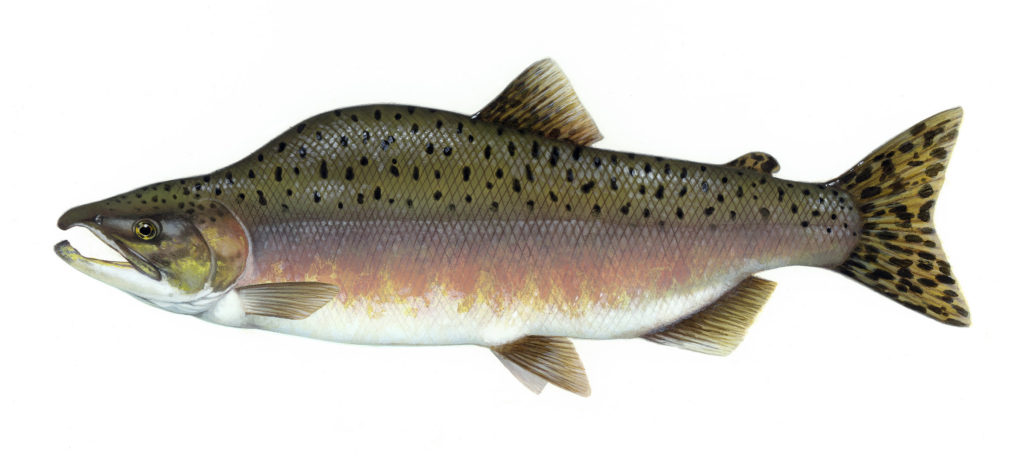
O nce considered undesirable, the importance of pink salmon or “humpies” has increased as other salmon stocks have declined. From June to September, adult pink salmon migrate up freshwater streams to spawning sites. The male develops a large hump on its back, an extended, turned-down snout and brighter colouring. The female lays up to 1900 orange-coloured eggs and guards them until she perish, just days after spawning. Hatching occurs 3-4 months later and fry make their way downstream to the ocean.
At 2 years of age, pinks return to the same river to begin the cycle again.
Where found
mainly at sea but spawn inland
